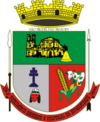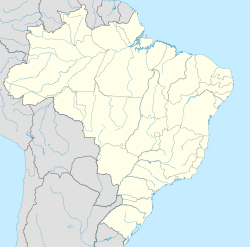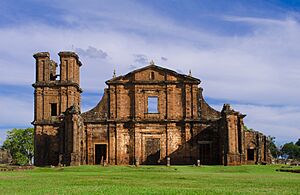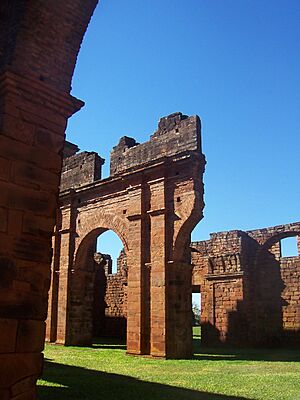São Miguel das Missões facts for kids
Quick facts for kids
São Miguel das Missões
|
|||
|---|---|---|---|
|
Municipality
|
|||
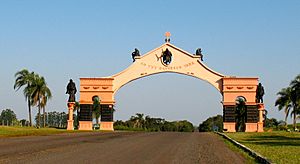
Gateway to the city of São Miguel das Missões
|
|||
|
|||
| Motto(s):
Patrimônio Histórico e Cultural da Humanidade (Historical and Cultural Heritage of Humanity)
|
|||
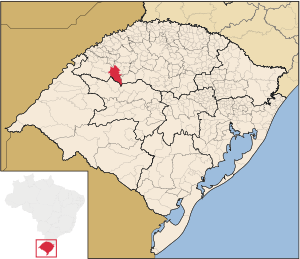
Location in Rio Grande do Sul state
|
|||
| Country | |||
| Region | South | ||
| State | Rio Grande do Sul | ||
| Mesoregion | Riograndense Northwest | ||
| Microregion | Santo Ângelo | ||
| Area | |||
| • Total | 1,246 km2 (481 sq mi) | ||
| Elevation | 305 m (1,001 ft) | ||
| Population
(2020)
|
|||
| • Total | 7,683 | ||
| • Density | 6.1661/km2 (15.970/sq mi) | ||
| Time zone | UTC−3 (BRT) | ||
| UNESCO World Heritage Site | |
|---|---|
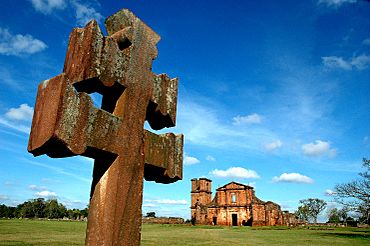 |
|
| Part of | Jesuit Missions of the Guaranis |
| Criteria | Cultural: (iv) |
| Inscription | 1983 (7th Session) |
| Extensions | 1984 |
São Miguel das Missões is a small city in the Rio Grande do Sul state, located in southern Brazil. It is famous for its important ruins of a 17th-century Spanish Jesuit mission. The city covers about 1,246 square kilometers (481 square miles) and had a population of 7,683 people in 2020.
What are the São Miguel das Missões Ruins?
The city of São Miguel das Missões grew around an old Spanish colonial settlement. This settlement was called a Jesuit Reduction, specifically Mission San Miguel Arcángel. It was started in 1632. Later, when the area became part of Brazil, its name changed to Mission São Miguel das Missões.
In 1984, the Mission São Miguel das Missões site was recognized as a World Heritage Site by UNESCO. It was one of five Jesuit mission sites, four in Argentina and one in Brazil, to receive this special honor. These sites are known together as the Jesuit Missions of the Guaranis.
The Mission Museum: A Look into History
The Mission Museum (Museu das Missões) is a history museum found right in São Miguel Mission. It helps visitors learn more about the past of the area.
Creating this museum was one of the first big ideas of the Office of Historical and Artistic Heritage. This office is now called IPHAN. In 1937, an architect named Lucio Costa was sent to Rio Grande do Sul. His job was to look at the remains of the old Jesuit missions and suggest what to do.
One of his main ideas was to build a museum. This museum would keep the many statues from the missions that were spread around the region. In 1938, the old town of San Miguel and the museum building were officially protected as National Heritage sites. Then, in 1940, the Museum of the Missions officially opened its doors.
Between 1938 and 1940, another architect, Lucas Mayerhofer, worked on making the San Miguel mission church ruins stable. He also oversaw the building of the museum and collected the statues.
Today, the museum's collection includes many religious images. These images date back to when the Jesuit missions were first set up in the region.
See also
 In Spanish: São Miguel das Missões para niños
In Spanish: São Miguel das Missões para niños
- Spanish Jesuit Missions of the Guaranis-related topics
- Governorate of Paraguay
- Misiones Orientales



